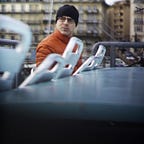Leica III camera review
With 35mm film reviving, and for a good reason, you may want to check out some almost forgotten prime pieces of equipment that should fulfill your artistic desires. There are many lens interchangeable options available for cheap now, but if you want compactness, rangefinders are an exciting option for many reasons.
Rangefinders are smaller by design. Reflex cameras work by inserting a hinged flipping-mirror between the lens and the film/sensor that will divert the image to your viewfinder until you press the trigger. This optomechanical apparatus increases size compared to rangefinder counterparts, that is also why mirrorless digital camera designs are more compact.
While reflex cameras let you see the actual image through the lens, if you don’t use autofocus, it will usually require a central prism or pattern to assist you to focus precisely. In a rangefinder, two separate superimposed images of the photographed scene have to align at the plane of focus, similar to how the stereoscopic human eyes ascertain distances.
The image you preview doesn’t originate from the actual photographic lens, but from two separate optical lenses above (forming the telemeter) whose diverging visual angle mechanism synchronizes to the rotation of the photo lens barrel’s focusing ring.
Rangefinders are optimized for a chosen focal-length range (e.g., between 35mm and 90mm) and thus are, when well serviced, actively increase your focal precision in-between. However, beyond that, preferential range precision might lack.
There are a few variants of the Leica III, all of which have two viewports through which you will have to see. One for focusing (the telemeter) and one for framing (a simple field of view sight). The Leica M series will later bring both together with the M3. But with some practice, these cameras will give you a steady performance, either for street or for more precise portraits. Compatible 39mm screw lenses are plenty, from many brands. And if you go for more modern models, you will most often be able to find adapters, most notably for M rangefinder compatibility up to the latest M10.
While later M cameras from Leica or competing brands might be more practical, the mechanical quality of these makes them a great tool, and their small rangefinder makes them very compact. The build is sturdy, makes them a bit heavy for the size, thus offers better stability.
While the second-hand price is not low for a well-serviced item, it is way worth it and more economical than most more modern alternatives. And lets you take pictures with charm.
Again, I will enhance this article with time.
black box:
20200711 added two photos with yellow filter
You can always check some other photographic examples on my Instagram page.
